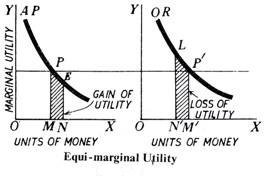Major Issues of Economic Development
Economic Development is a complex process that involves the improvement of living standards, quality of life, and economic well-being of a population. While many countries aim to achieve economic development, they face a variety of challenges that can hinder progress.
- Poverty
Poverty remains one of the most significant challenges to economic development. A large portion of the population in developing countries lives below the poverty line, struggling to meet basic needs such as food, shelter, and healthcare. Poverty not only affects individuals but also hampers national economic growth by limiting access to education, skills development, and opportunities for employment. Addressing poverty requires targeted policies, increased access to basic services, and investments in human capital.
- Inequality
Economic inequality, both within and between countries, is a major concern in the development process. It manifests in unequal access to resources, education, healthcare, and economic opportunities. High levels of inequality can lead to social unrest, political instability, and hinder overall development by limiting the ability of large segments of the population to contribute to and benefit from economic growth. Reducing inequality is crucial for creating a more inclusive and sustainable economy.
- Unemployment
High unemployment rates, particularly among the youth, are a major obstacle to economic development. Lack of job opportunities leads to social and economic instability, increased poverty, and underutilization of human resources. Structural changes in the economy, such as the shift from agriculture to industrial and service sectors, can lead to job displacement. Effective policies for job creation, skills development, and labor market reforms are necessary to tackle this issue.
- Infrastructure Deficiencies
Inadequate infrastructure—such as roads, transportation systems, energy supply, and communication networks—significantly hampers economic development. Poor infrastructure limits trade, investment, and access to markets, thus affecting the growth potential of businesses and industries. Investments in infrastructure development are crucial for enhancing productivity and enabling economic growth.
- Environmental Sustainability
Economic development often comes at the cost of environmental degradation, such as deforestation, pollution, and overuse of natural resources. Sustainable development that balances economic growth with environmental preservation is essential. Addressing climate change, promoting renewable energy, and implementing environmentally friendly policies are necessary steps to ensure that development is both inclusive and ecologically sustainable.
- Debt and Financial Instability
Many developing countries face the challenge of excessive national debt, which limits their ability to invest in critical sectors like healthcare, education, and infrastructure. High debt levels lead to financial instability, reduce the capacity for economic expansion, and increase vulnerability to external economic shocks. Managing debt and ensuring financial stability are key to sustainable development.
- Political Instability and Governance
Political instability, corruption, and poor governance are major barriers to economic development. Inefficient institutions, lack of transparency, and weak rule of law discourage investment and economic activity. Stable political environments and effective governance are critical for creating an environment conducive to economic growth and development.
- Globalization and External Shocks
While globalization has opened up markets, it also exposes economies to external shocks such as financial crises, trade wars, and fluctuations in commodity prices. These external factors can undermine economic stability and hinder development, especially for economies that rely heavily on exports or foreign investments. Developing resilience to global economic fluctuations is crucial for long-term development.


